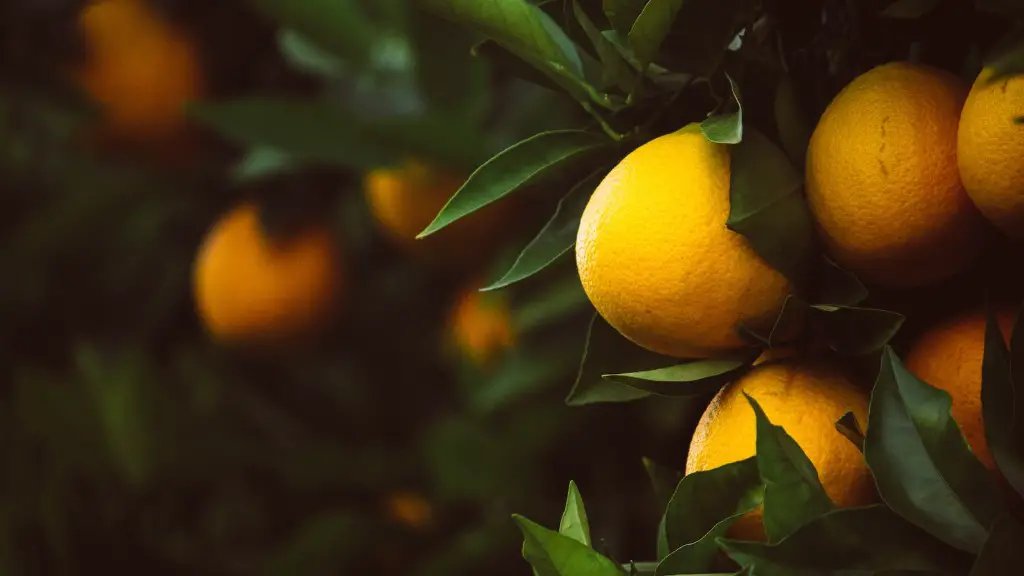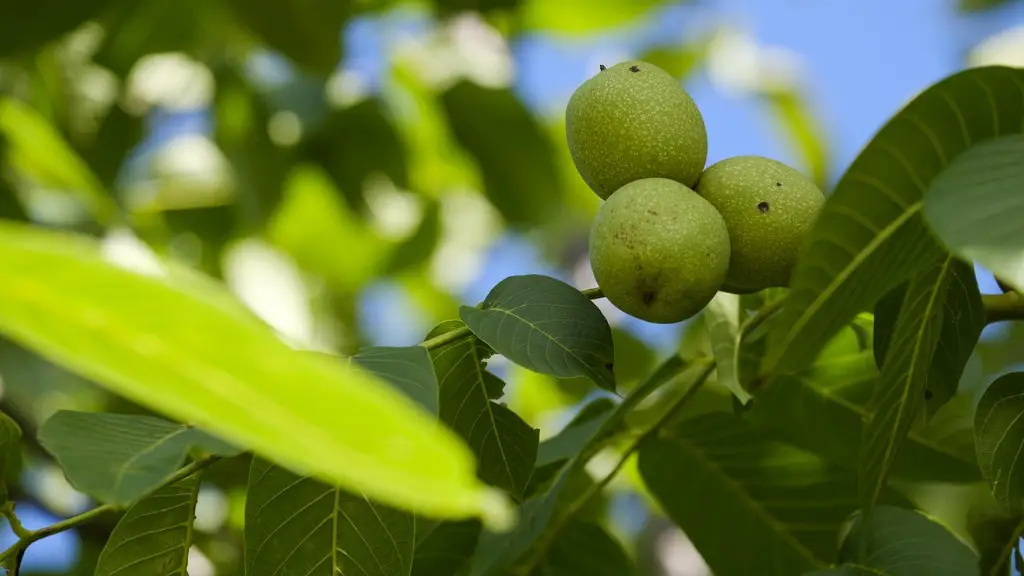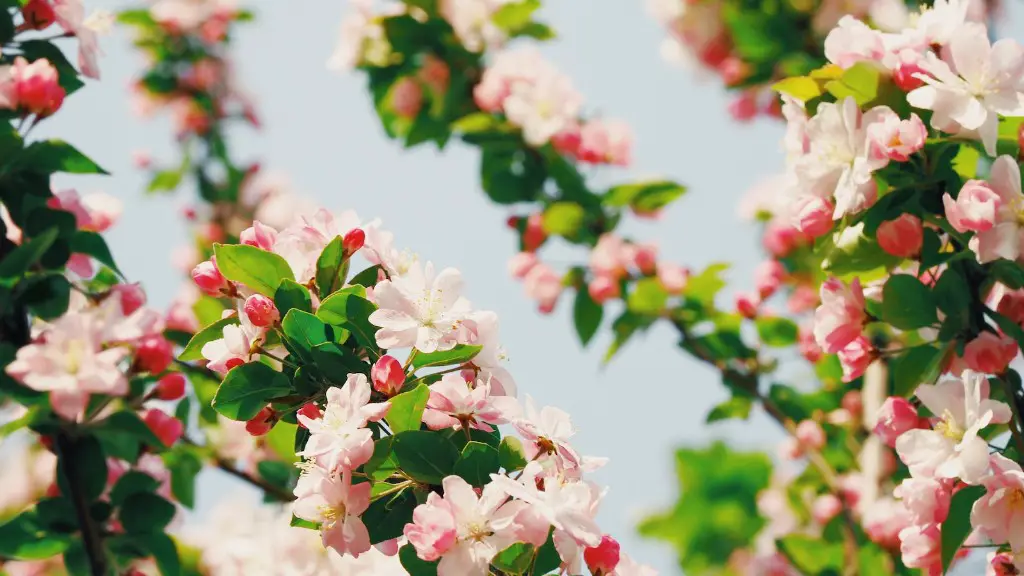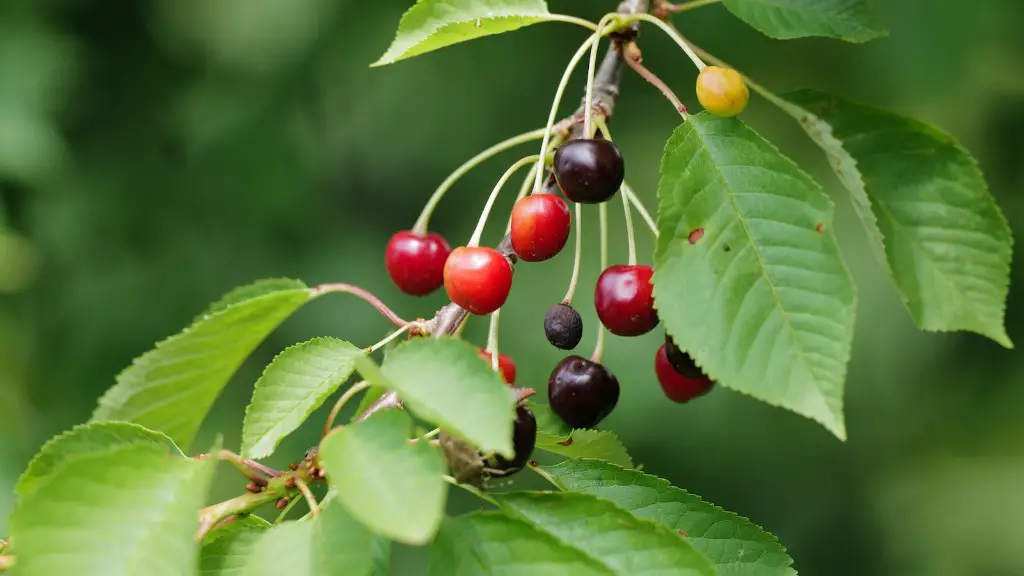Lemon trees are a popular choice among gardeners, as they bear delicious citrus fruits. However, if you notice the leaves of your lemon tree are turning yellow it may be a sign of distress. Here, we discuss the causes of yellow leaves on a lemon tree and what you should do.
Nutritional deficiencies can cause yellow leaves on a lemon tree. In particular, a lack of nitrogen in the soil can contribute to yellow leaves as this element is necessary for photosynthesis. If you suspect a lack of nutrients, you should test the soil and add additional fertilizer. Additionally, improper irrigation can also lead to yellow leaves, as a lemon tree requires a lot of water in order to thrive.
The environment can also affect a lemon tree’s health. Temperature extremes, whether it be hot or cold, can cause yellow leaves. If your region experiences frequent periods of temperature extremes, you should consider planting your lemon tree in a more sheltered location. Furthermore, the wind can cause leaves to dry out and become yellow. If your area experiences strong winds you could try planting a windbreak to decrease its impact.
Disease and pest infestations can also cause yellow leaves. Fungal pathogens, such as Botryosphaeria dothidea, can cause a type of leaf spot known as melanose. This causes the leaves to develop yellow blotches. Pests, such as citrus scab mites, can also be responsible for producing yellow leaves. To treat these problems, you should remove any affected branches or leaves and apply an appropriate fungicide or pesticide.
In conclusion, yellow leaves on a lemon tree can be caused by several different factors, from nutritional deficiencies to disease or pest infestations. To ensure your lemon tree stays healthy you should make sure to check for any signs of distress and take appropriate action.
Nutritional Deficiencies
Nutritional deficiencies can be a common cause of yellow leaves on a lemon tree. Nitrogen is essential for a lemon tree’s health, as it helps facilitate photosynthesis, a process by which the plant makes its own food. A lack of nitrogen in the soil can result in yellow leaves and a reduced ability to blossom and fruit.
To make sure your lemon tree isn’t affected by a lack of nitrogen, you should test the soil for its nutrients at least once a year. If you discover the soil is lacking in nitrogen, you should fertilize it with a high-nitrogen fertilizer. Once applied according to the dosage instructions, your tree should begin to recover and its leaves should return to a more natural green color.
Not only nitrogen is necessary for a healthy lemon tree, but proper irrigation as well. In rainy climates, lemon trees don’t need irrigation, but in dry climates they require a lot of water. A lemon tree should be watered at least twice a week to ensure it has enough water. If the soil is too dry, the leaves of the tree may turn yellow.
If your region experiences water shortages, you may need to consider other irrigation options, such as drip irrigation or even collecting rainwater. This way, you can ensure your tree has a consistent supply of water without having to depend on the municipal system. Combined with a nitrogen-rich fertilizer, proper irrigation is key to making sure your lemon tree stays healthy and happy.
Environment
The environment can also have a major effect on a lemon tree’s health, and it can lead to yellow leaves. Temperature extremes, whether it be hot or cold, can cause damage to a lemon tree and its leaves to turn yellow. Furthermore, frequent wind exposure can also lead to yellow leaves, as gusts of wind can cause the leaves to dry out and discolor.
If your area experiences harsh temperatures or strong winds, you should take the necessary precautions to protect your lemon tree. In hot climates, an umbrella or a shade cloth can be used to limit exposure to direct sunlight. For windy conditions, planting a windbreak nearby can help decrease the impact of gusts and give your tree a chance to flourish.
In addition to temperature and wind, you should also pay attention to the soil. Poor soil quality can lead to yellow leaves, as it can create an inhospitable environment for a lemon tree. If the pH level is too high, the tree may suffer from nutrient and water absorption issues, causing leaves to turn yellow.
If you’re unsure about the quality of your soil you should always consider getting it tested. Nutrient and pH testing can help you determine the right approach to increase the quality of the soil. Once the tests have been completed, you can then decide the best way to improve it, such as adding organic matter, mulching or using raised beds.
Disease & Infestations
In addition to environmental and nutritional issues, disease and infestations can cause yellow leaves on a lemon tree. Several types of fungi may affect your tree and cause leaf spots known as melanose, which can cause the leaves to look yellow or bronze. Additionally, insects such as citrus scab mites can also be responsible for producing yellow leaves.
In order to identify if the yellow leaves are due to a disease, it’s important to inspect the tree and look for signs of distress. If you find any affected branches or leaves, you should remove them to prevent the further spreading of the problem. After removing the affected parts, you can then decide whether to apply a fungicide or a pesticide.
It’s important to note that it’s never recommended to use any treatments without first consulting an expert. Moreover, it’s good practice to research the types of fungicides and pesticides available and the appropriate dosages, as using the incorrect product or dosage can lead to further complications.
In some cases, diseases may be hard to diagnose and require expert advice. If you’re unable to diagnose the cause of the yellow leaves, you should contact a professional who can visit the site and inspect the tree. This way, you’ll have a better understanding of what’s causing the yellow leaves and how to treat it.
Prevention
To ensure your lemon tree stays healthy it’s important to take preventative measures. Proper care is the key to making sure your tree is well looked after and free from any diseases or pests.
To begin with, you should always make sure to monitor the tree for any signs of distress. If you happen to spot any yellow leaves, you should take action and investigate the cause. In addition to this, you should also regularly check the soil for the right balance of nutrients, as well as irrigate the tree only when necessary.
It’s also important to keep an eye out for any infestations, as pests and diseases can spread quickly if left untreated. After every rain, you should also check for any fungal growths and apply an appropriate fungicide if it gets out of control.
Finally, if your area experiences recurring periods of temperature extremes or high winds, you should take extra precautions to protect your lemon tree. An umbrella or a shade cloth can be used to limit exposure to direct sunlight and a windbreak can help decrease the impact of gusts. By taking the necessary steps, you can make sure your lemon tree stays healthy.
Conclusion
Yellow leaves on a lemon tree can be caused by several different factors, from nutritional deficiencies to disease or pest infestations. To ensure your lemon tree stays healthy, you should make sure to take the necessary preventative measures, such as regularly testing the soil, monitoring the tree for signs of distress, keeping an eye out for pests and diseases, and protecting it from harsh temperatures or strong winds.





